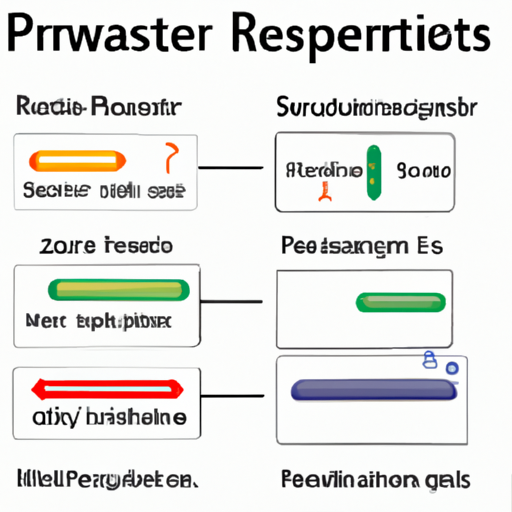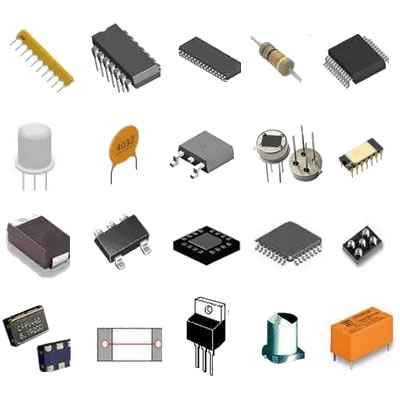What are the Important Product Categories for the Main Parameters of Resistors?
I. Introduction
A. Definition of Resistors
Resistors are passive electronic components that limit the flow of electric current in a circuit. They are fundamental to the operation of electronic devices, serving various functions such as voltage division, current limiting, and signal conditioning. By providing a specific resistance value, resistors help control the behavior of electrical circuits, ensuring they operate within desired parameters.
B. Importance of Resistors in Electronic Circuits
In electronic circuits, resistors play a crucial role in managing current and voltage levels. They are essential for protecting sensitive components from excessive current, setting bias points in transistors, and creating reference voltages. Without resistors, circuits would be prone to malfunction, leading to potential damage and inefficiency.
C. Overview of Main Parameters of Resistors
When selecting resistors for a specific application, several key parameters must be considered. These include resistance value, tolerance, power rating, temperature coefficient, and voltage rating. Understanding these parameters is vital for ensuring that the chosen resistor meets the requirements of the circuit.
II. Types of Resistors
A. Fixed Resistors
Fixed resistors have a constant resistance value and are the most commonly used type in electronic circuits. They come in various materials and constructions, each with unique characteristics.
1. **Carbon Composition Resistors**: Made from a mixture of carbon and a binding material, these resistors are known for their high energy absorption and ability to withstand high temperatures. However, they have a relatively high tolerance and are less stable over time.
2. **Metal Film Resistors**: These resistors are made by depositing a thin layer of metal onto a ceramic substrate. They offer better stability and lower noise compared to carbon composition resistors, making them suitable for precision applications.
3. **Wirewound Resistors**: Constructed by winding a metal wire around a ceramic or fiberglass core, wirewound resistors can handle high power levels and are often used in applications requiring high precision and stability.
B. Variable Resistors
Variable resistors allow for adjustable resistance values, making them versatile components in various applications.
1. **Potentiometers**: These are commonly used for adjusting voltage levels in circuits, such as volume controls in audio equipment. They consist of a resistive element and a movable wiper that changes the resistance.
2. **Rheostats**: Similar to potentiometers, rheostats are used to control current flow. They typically have two terminals and are often used in applications requiring high power.
C. Specialty Resistors
Specialty resistors are designed for specific applications and have unique properties.
1. **Thermistors**: These temperature-sensitive resistors change resistance with temperature variations. They are widely used in temperature sensing and control applications.
2. **Photoresistors**: Also known as light-dependent resistors (LDRs), these components change resistance based on light intensity. They are commonly used in light-sensing applications, such as automatic lighting systems.
3. **Varistors**: These voltage-dependent resistors protect circuits from voltage spikes. They are often used in surge protection devices to prevent damage from transient voltage surges.
III. Main Parameters of Resistors
A. Resistance Value
1. **Definition and Measurement**: The resistance value, measured in ohms (Ω), indicates how much a resistor opposes the flow of electric current. It is determined by the material, length, and cross-sectional area of the resistor.
2. **Importance in Circuit Design**: Selecting the correct resistance value is crucial for achieving the desired current and voltage levels in a circuit. Incorrect values can lead to circuit malfunction or component damage.
B. Tolerance
1. **Definition and Measurement**: Tolerance refers to the allowable deviation from the specified resistance value, expressed as a percentage. For example, a resistor with a value of 100Ω and a tolerance of ±5% can have a resistance between 95Ω and 105Ω.
2. **Impact on Circuit Performance**: Tolerance affects the accuracy and reliability of circuit performance. In precision applications, low-tolerance resistors are preferred to ensure consistent operation.
C. Power Rating
1. **Definition and Measurement**: The power rating, measured in watts (W), indicates the maximum power a resistor can dissipate without overheating. It is determined by the resistor's construction and material.
2. **Importance in Heat Dissipation**: Selecting a resistor with an appropriate power rating is essential to prevent overheating and potential failure. Resistors that exceed their power rating can become damaged or cause circuit failure.
D. Temperature Coefficient
1. **Definition and Measurement**: The temperature coefficient indicates how much a resistor's resistance changes with temperature, measured in parts per million per degree Celsius (ppm/°C). A lower temperature coefficient indicates better stability over temperature variations.
2. **Effects on Performance in Varying Conditions**: Resistors with a low temperature coefficient are preferred in applications where temperature fluctuations are expected, as they maintain consistent performance.
E. Voltage Rating
1. **Definition and Measurement**: The voltage rating indicates the maximum voltage a resistor can handle without breaking down. It is crucial for ensuring that the resistor can withstand the voltage levels present in the circuit.
2. **Importance in Preventing Breakdown**: Selecting a resistor with an appropriate voltage rating is vital to prevent breakdown and potential circuit damage. Exceeding the voltage rating can lead to catastrophic failure.
IV. Product Categories Based on Main Parameters
A. Resistance Value Categories
1. **Low Resistance (Ohmic Range)**: Resistors with low resistance values (typically below 10Ω) are used in applications requiring high current flow, such as power supplies and motor controls.
2. **Medium Resistance**: Medium resistance values (10Ω to 1kΩ) are commonly used in signal processing and general-purpose applications.
3. **High Resistance**: High resistance values (above 1kΩ) are used in applications requiring low current flow, such as input stages of amplifiers and sensor circuits.
B. Tolerance Categories
1. **Standard Tolerance (±5%, ±10%)**: Standard tolerance resistors are suitable for general applications where precision is not critical.
2. **Precision Tolerance (±1%, ±0.5%)**: Precision tolerance resistors are used in applications requiring high accuracy, such as instrumentation and measurement devices.
C. Power Rating Categories
1. **Low Power (1/8W, 1/4W)**: Low power resistors are used in low-power applications, such as signal processing circuits.
2. **Medium Power (1W, 2W)**: Medium power resistors are suitable for general-purpose applications where moderate power dissipation is required.
3. **High Power (5W and above)**: High power resistors are used in applications requiring significant power handling, such as power amplifiers and industrial equipment.
D. Temperature Coefficient Categories
1. **Standard Temperature Coefficient (±100 ppm/°C)**: Standard temperature coefficient resistors are suitable for general applications where temperature stability is not critical.
2. **Low Temperature Coefficient (±50 ppm/°C)**: Low temperature coefficient resistors are preferred in precision applications where temperature variations can affect performance.
E. Voltage Rating Categories
1. **Low Voltage (up to 50V)**: Low voltage resistors are used in low-voltage applications, such as battery-powered devices.
2. **Medium Voltage (50V to 250V)**: Medium voltage resistors are suitable for general-purpose applications where moderate voltage levels are present.
3. **High Voltage (above 250V)**: High voltage resistors are used in applications requiring high voltage handling, such as power supplies and industrial equipment.
V. Applications of Different Resistor Categories
A. Consumer Electronics
In consumer electronics, resistors are used in various applications, including audio equipment, televisions, and smartphones. They help control volume, manage signal levels, and protect sensitive components.
B. Industrial Equipment
Resistors play a vital role in industrial equipment, where they are used for motor control, power regulation, and signal conditioning. High power and precision resistors are commonly employed in these applications.
C. Automotive Applications
In automotive electronics, resistors are used in various systems, including engine control units, lighting, and infotainment systems. They help manage current flow and ensure reliable operation.
D. Medical Devices
Resistors are critical in medical devices, where precision and reliability are paramount. They are used in monitoring equipment, diagnostic devices, and therapeutic systems.
E. Telecommunications
In telecommunications, resistors are used in signal processing, impedance matching, and circuit protection. They help ensure reliable communication and signal integrity.
VI. Conclusion
A. Summary of Key Points
Resistors are essential components in electronic circuits, with various types and parameters that influence their performance. Understanding the main parameters—resistance value, tolerance, power rating, temperature coefficient, and voltage rating—is crucial for selecting the right resistor for specific applications.
B. Importance of Selecting the Right Resistor Category
Choosing the appropriate resistor category based on these parameters ensures optimal circuit performance, reliability, and longevity. Whether for consumer electronics, industrial equipment, or specialized applications, the right resistor can make a significant difference.
C. Future Trends in Resistor Technology
As technology advances, the demand for more precise, reliable, and compact resistors continues to grow. Innovations in materials and manufacturing processes are expected to lead to the development of resistors with improved performance characteristics, catering to the evolving needs of various industries.
VII. References
A. Academic Journals
- IEEE Transactions on Electron Devices
- Journal of Electronic Materials
B. Industry Standards
- International Electrotechnical Commission (IEC) Standards
- American National Standards Institute (ANSI) Standards
C. Manufacturer Specifications
- Resistor datasheets from leading manufacturers such as Vishay, Yageo, and Panasonic.
---
This blog post provides a comprehensive overview of the important product categories for the main parameters of resistors, ensuring readers gain a thorough understanding of this essential electronic component.





